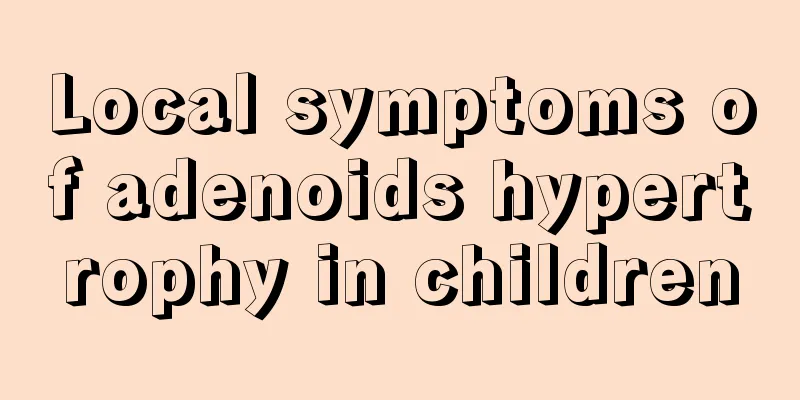Local symptoms of adenoids hypertrophy in children

|
Adenoids hypertrophy in children is a common disease in children, concentrated in children aged 3-7 years old. The pathology of its symptoms is also relatively complex because it is often accompanied by related complications. Its clinical manifestations are also divided into local and global. So today we will first popularize what adenoids hypertrophy in children is, and at the same time focus on its common local clinical manifestations to give parents some references and reminders. Adenoids, also called pharyngeal tonsils or adenoids, are located at the top of the nasopharynx and the posterior wall of the pharynx. They belong to lymphoid tissue and have an orange-segment-like surface. Like tonsils, adenoids grow larger as age increases after birth and gradually shrink after the age of 10. Adenoids hypertrophy is a pathological proliferation of the adenoids due to repeated stimulation of inflammation, which causes symptoms such as nasal congestion and mouth breathing, especially at night, and causes snoring and restless sleep. Children often turn over from time to time, which is more obvious when lying on their backs. In severe cases, sleep apnea may occur. This disease is most common in children and is often associated with chronic tonsillitis and tonsil hypertrophy. Clinical manifestations of local symptoms: Children have a narrow nasopharyngeal cavity. If enlarged adenoids block the posterior nasal cavity and the pharyngeal opening of the Eustachian tube, it may cause symptoms in the ears, nose, pharynx, and throat. (1) Ear symptoms: The pharyngeal opening of the Eustachian tube is blocked, causing secretory otitis media, leading to hearing loss and tinnitus. (2) Nasal symptoms: often complicated by rhinitis, sinusitis, nasal congestion and runny nose. There is an occlusive nasal sound when speaking, snoring when sleeping, and in severe cases, sleep apnea occurs. (3) Symptoms of the pharynx, larynx and lower respiratory tract: Because secretions flow downward and irritate the respiratory mucosa, they often cause night coughing and are prone to complications such as tracheitis. (4) Adenoid facies: Due to long-term mouth breathing, the development of facial bones is impaired, the jaw becomes longer, the palate becomes high and arched, the teeth are uneven, the upper incisors protrude, the lips are thick, and there is a lack of expression, resulting in the so-called "adenoid facies". Through the above knowledge popularization about adenoids hypertrophy in children, parents and friends should pay attention to any abnormal conditions in the child's nasopharynx and throat, including the sound of speaking, snoring during sleep, whether the teeth are straight, night coughing, etc., to determine whether the child has adenoids hypertrophy. If so, go to a professional hospital for examination and prevention immediately. |
<<: How to prepare nutritious meals for young children
>>: How is Mycoplasma pneumonia treated in children?
Recommend
What are the clinical symptoms of indigestion in babies?
Indigestion is a disease that is very common in a...
What is the cause of hernia in children?
Nowadays, more and more children may suffer from ...
Baby has a cold and blood in his nose
If the baby gets cold, it is very easy to catch a...
What to do if your baby has a bad taste in his mouth
If the baby has a bad taste in the mouth, parents...
Children with constipation and bleeding need to pay attention to dietary adjustments
It is very common for children to suffer from con...
Children with autism have many obstacles in their performance!
Autism can be said to be a mental illness, and in...
How to prevent baby from having fever and convulsions
Many parents are at a loss as to what to do when ...
What causes redness and swelling of the glans in children?
Parents often find that their children always hav...
The baby's ribs protrude when lying down
The baby's physical health is the most import...
What are some common health tips for children in autumn?
In autumn, the temperature difference between day...
How to remove scars from burns on children?
Children's skin is very delicate. Once they g...
What is the cause of blood in the child's urine?
Only parents' careful care for their children...
What to do if your baby has diarrhea and watery stools
When many parents find that their baby has diarrh...
The child's eyes suddenly became swollen
People should know that baby's swollen eyes i...
What should children with bronchitis, cough and phlegm eat?
The baby's physical constitution is very poor...









